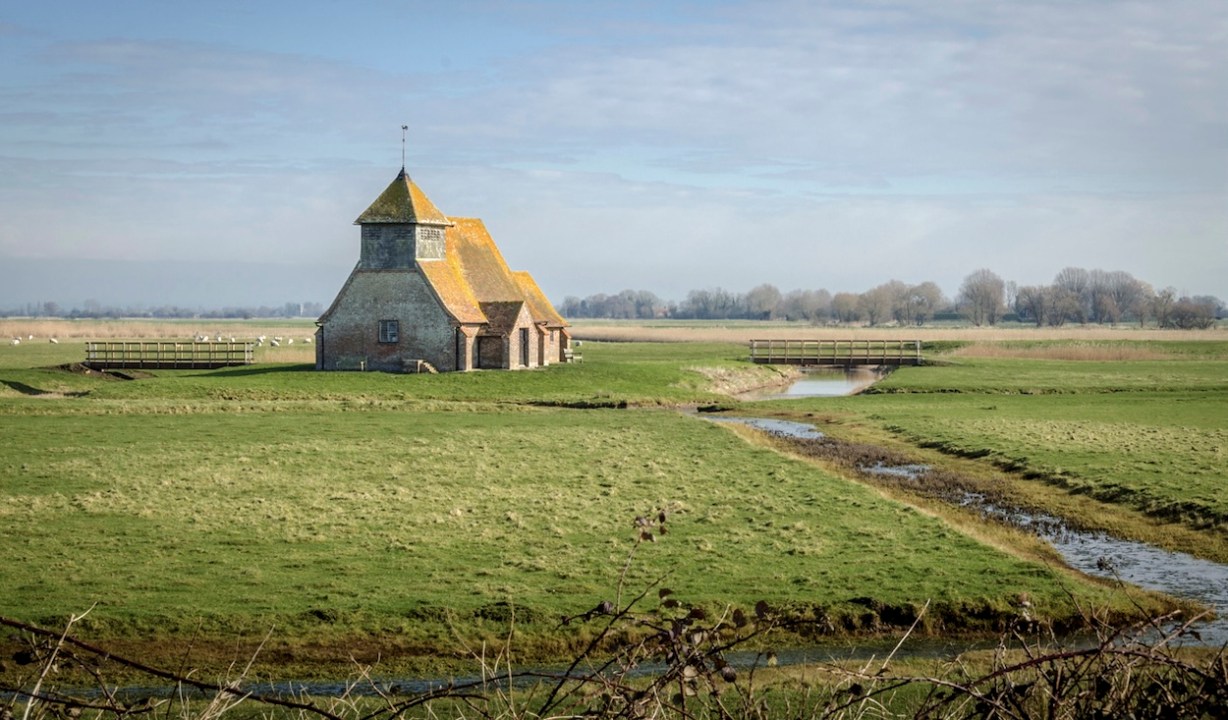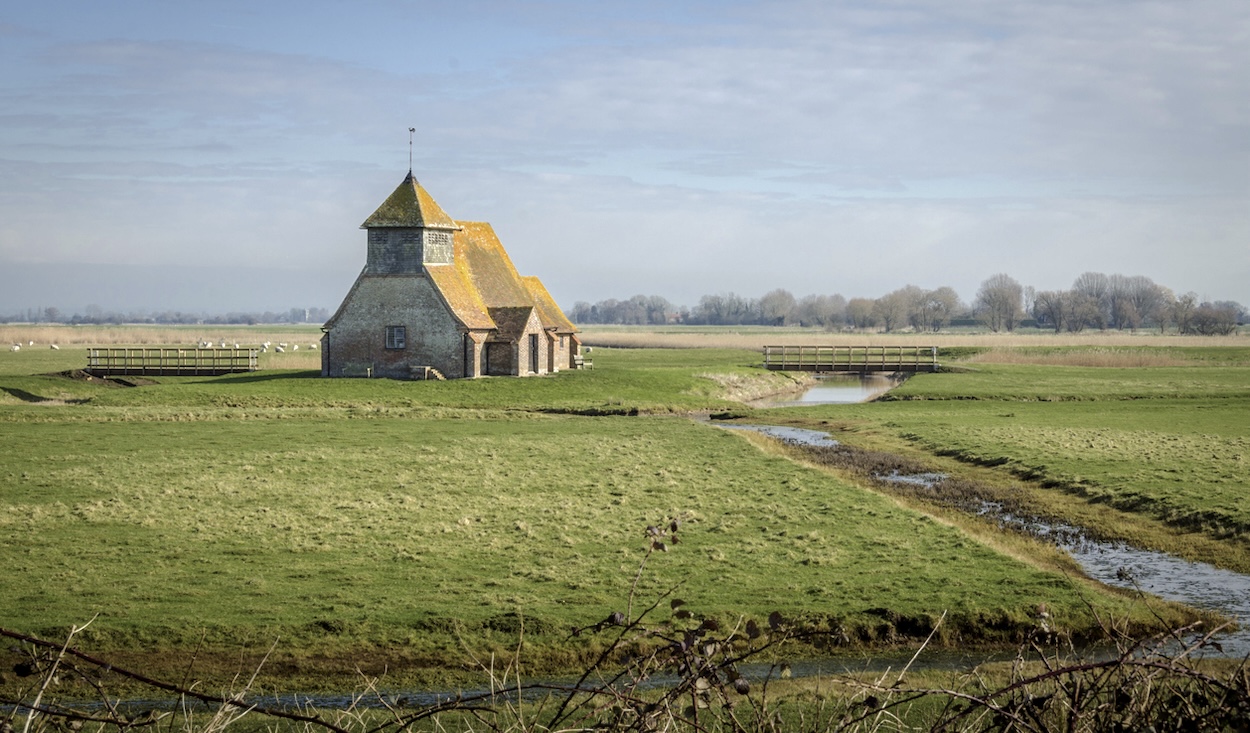We have in our kitchen a mug purporting to belong to ‘Romney Marsh Mountain Rescue’. There is, of course, no such organisation – the mug is a reference to a long-standing family joke, about how my brothers and I love mountaineering despite having grown up in one of the lowest, flattest parts of England. The Marsh has a handful of small hillocks – really just bumps with delusions of grandeur – but overall it is very flat. My Ordnance Survey map does not mark a single contour line from Rye in the south west to Hythe in the north east and from the Royal Military Canal to the Channel.
Winter gales come roaring up the Channel with startling regularity
After a quarter of a century away, I returned to live here with my wife and children last summer. Dymchurch, our new home, was for hundreds of years a quiet farming and fishing community. In the 18th century it was a lively centre for cross-Channel smuggling; not only is it one of the closest points to France on the whole coast, and blessed with long, smooth beaches, but it was a long way from large administrative centres and therefore remote from the prying eyes of the Revenue men.
During the early 20th century it attracted the odd writer and artist looking for some quiet, out of the way spot. Noel Coward, who lived only a few miles away in the Kent Downs, was a regular visitor, and the author Edith Nesbit settled locally after her second marriage. Pioneering Modernist Paul Nash lived and painted here in the early 1920s and the old seawall features in many of his pictures from the period. Nowadays the local economy is heavily dependent on the holidaymakers who flock to the golden sands in the summer.
In the off-season, it gets rather quiet and you can understand why. The sea temperature, pretty bracing in July and August, turns positively glacial by year’s end, as I discovered on a Boxing Day swim. Winter gales come roaring up the Channel with startling regularity and the countryside takes on a stark and forlorn appearance. However, the Marsh has its own beauty, if you are willing to look. There is something almost transcendent about the vastness of the sky, unencumbered by hills or tall buildings or many trees. On clear starry nights, if you can get out into the fields, the great spread of stars is almost overwhelming. It reminds me a little of driving into the New Mexico desert one evening many years ago, under the most extraordinary night sky I have ever seen.
A few miles down the coast is the oddly spectacular Dungeness, a mini-wilderness of shingle dotted with an assortment of small houses, many of them with a distinctly eccentric appearance. Some began life as old railway carriages. Nearby are gravel pits where my older brothers used to go fishing. The whole area – a globally unique ecosystem – is overseen by two nuclear power stations, both now in the process of decommissioning.
Even in the daytime, and in good weather, Dungeness can have a somewhat eerie feel. After sunset, or in gloomy weather, the mood intensifies. And that insistent strangeness applies to the whole Marsh – and to similar places. Whether in the Fenlands, or along the beautifully bleak North Sea coast of Essex and Suffolk, or the isolated stretches of North Kent that inspired the beginning of Great Expectations, there is something challenging in the totally level landscape. Perhaps it’s our smallness as human beings or lack of control over nature. But it’s also true that ostensibly unremarkable terrain has a way of forcing us to pay closer attention. Working from home as I do, I often go for walks across the Marsh at lunchtime and in the absence of rolling hills or forests or crags or rivers, you have to look for smaller-scale natural treasures: wrens and sparrows bickering in the hedgerows or a heron waiting patiently by a dyke. There is a subtle drama in the shapes of some of the trees; the prevailing and persistent south-westerlies mean that many of them lean over in a mildly alarming fashion.
Maybe I’m biased. I was a boy here, so the temptation is to romanticise the countryside I knew all those years ago. All the same, I don’t think that’s the whole explanation. Somehow, in this odd little corner of the world that was gradually reclaimed from the sea over many centuries, something strange and beautiful lingers.







Comments